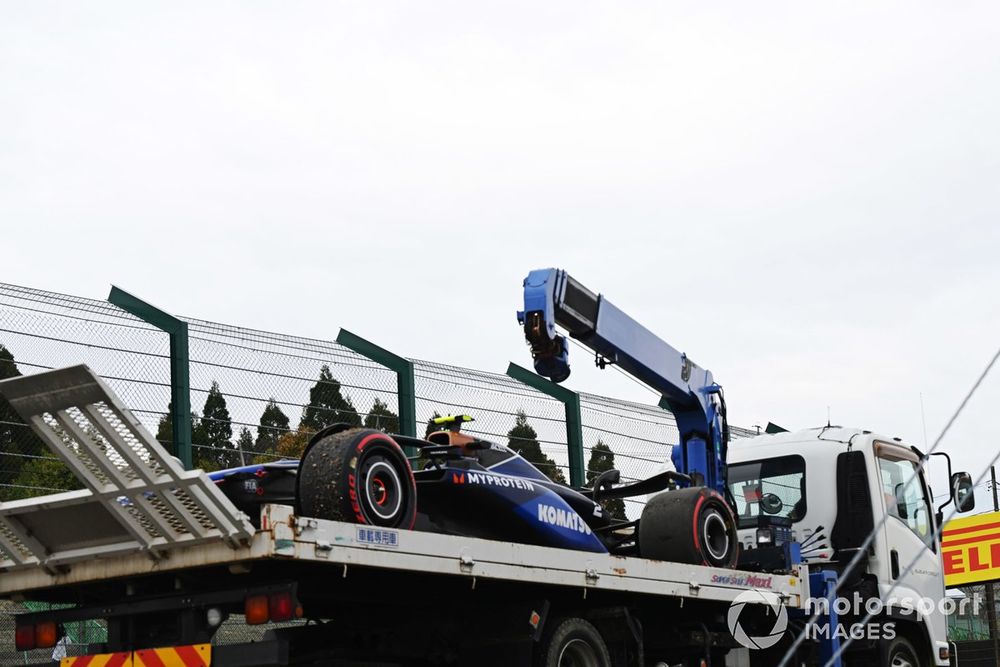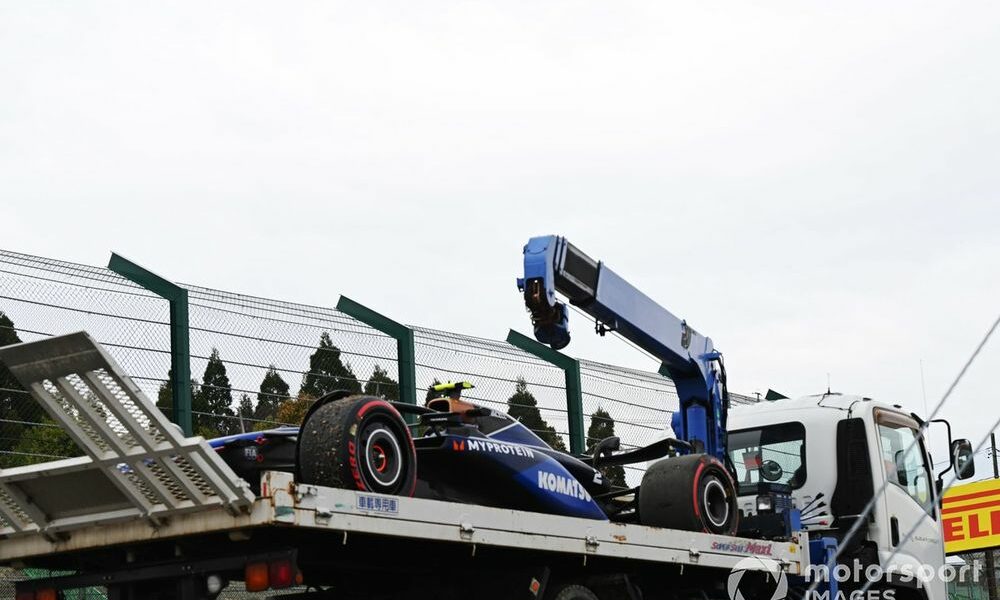The Grove team still does not have a spare, as Sargeant is using the chassis that was crashed by Alex Albon in Melbourne and subsequently repaired.
Sargeant lost control when he put his right-hand wheels on the grass at the high-speed Dunlop Curve lefthander, striking the barrier with both ends of the car. The accident left the team in a race to repair it for FP2.
“It’s pretty significant,” said Vowles, when asked about the extent of the damage. “The chassis is okay, fortunately, but I would say pretty much everything else isn’t. So suspension all round, gearbox cracked, big damage.
“It’s going to be difficult. We’ll obviously do our utmost to try and get the car back out there again, but the damage is extensive. So it will take a while.”
Regarding Sargeant’s mistake he added: “It’s at the top of the brow of the hill there, he struggled to see where his positioning was on track. It fundamentally looks like he didn’t quite realise where he was, with where the grass was on the outside, and put a wheel on the grass.”

The damaged car of Logan Sargeant, Williams FW46, is taken away on a truck by marshals after a crash in FP1
Photo by: Simon Galloway / Motorsport Images
Vowles denied the suggestion that Sargeant may have felt under pressure to prove a point after being obliged to hand his car to Albon in Melbourne.
“I’ve been chatting to him all week, all these last few weeks, in fact, because this is the point where you’ve got to keep a driver very close to you,” he said. “You’ve given them a very difficult situation to deal with, through no fault of their own.
“But he was honestly in a very good state of mind this week and last night again when I called him at about 9-10pm, a really, really strong state of mind, just wanted to get back into the car and get going. But not with the intention of proving to the world he deserves a seat, just his normal approach to things.
“What you saw here wasn’t a driver making a mistake because they were pushing to the limits. It’s a very different type of mistake, a frustrating one by all accounts, because it wasn’t on the limit of what the car could do.
“There was far more turning potential in it, he just didn’t know where the car was on track, relative to where he expected it to be, anyway.
“So I don’t think you’re seeing there the reaction of someone that wasn’t driving in Melbourne, I think you’re seeing more just a situation that could have appeared at any time.”

James Vowles, Team Principal, Williams Racing
Photo by: Motorsport Images
Vowles says Williams will still be without a spare at the next race in China.
“The third chassis at the moment won’t be with us until Miami, a long way away,” he said.
“In terms of the chassis, if you put all of your resources everything you possibly had within the organisation on it, it could be 8-10 weeks that you pretty much get a chassis done from freezer to something actually built and out there.
“And that’s by the time you get to a third chassis. It takes longer for the first ones as you get used to the process.
“Clearly, we don’t have the whole organisation just working on that, we’re working at the same time on spares and updates, and trying to get the throughputs.
“In our particular case clearly we have never had the intention of being here without three chassis, the intention was to have three right at the beginning of the year.
“It’s an outcome from just an overload within the system, the complexity of this car, and the amount that we were trying to push through.
“In terms of the complexity of it, it’s enormous. The chassis is thousands and thousands of pieces that you’re trying to bring together at the same time.”

